News Archive
The payload recovery in Lapland
These are images of the recovery of the payload near Avidsjaur, Sweden obtained by the team of Get Lost



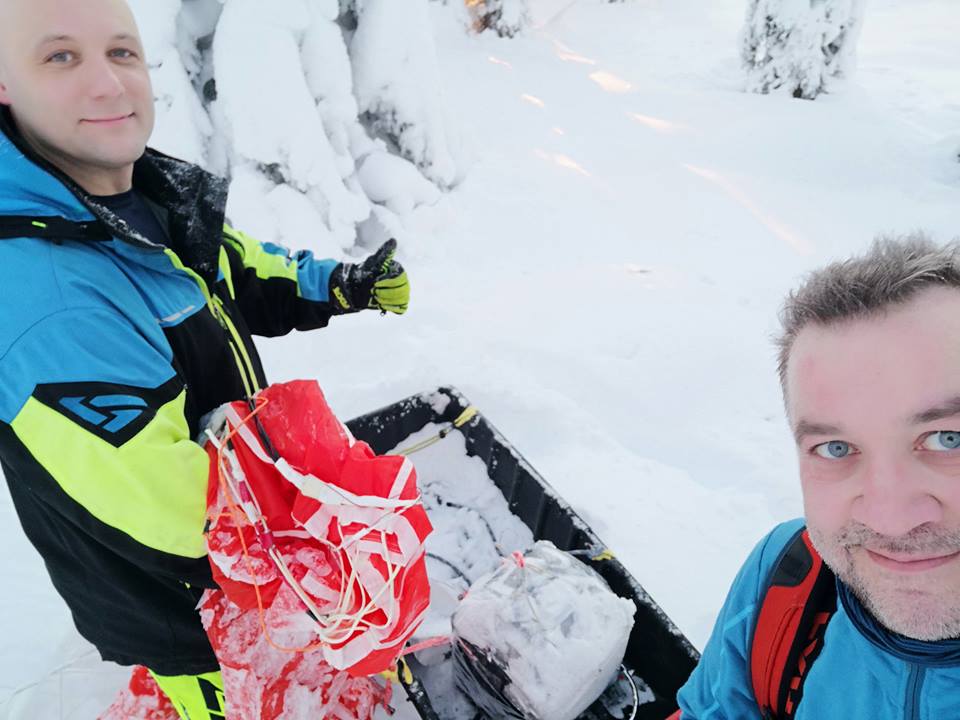
-
December 29 2017
Winter night balloon test in the Arctic
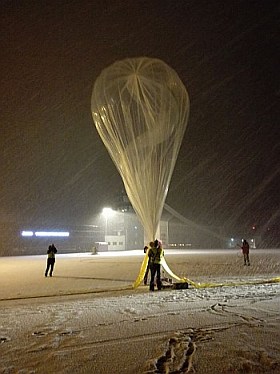
Longyearbyen, Svalbard Islands.- In the middle of the winter polar night a team of the ISTAR Group a balloon launch company based in Sisters, Oregon, United Sates gathered along with people from Italy and Russia to launch a stratospheric balloon from the facilities of the International Airport of Longyearbyen, located in the central part of the Spitzbergen Island, the largest one of the Svalbard archipelago.
The goal of the mission was to test the behaviour of balloon systems during a long duration flight in the cold night of the Arctic winter as a continuation of an effort originally started in 2003 when ISTAR collaborated with La Sapienza to establish a ballooning program from Svalbard. The final objective of the project is to develope a long duration flight capacity in the polar night for the benefit of important branches of science such as astronomy, cosmology, physics and atmospheric observations.
Two factors make extremely attractive the project of flying balloons in winter nights: the absence of solar irradiation for long periods, and the extremely low temperature and stable environment of the winter stratosphere which represents an ideal ambient for astronomical measurements.
The launch operation was in charge of Steven Peterzén from ISTAR, and counted with the assistance of Francesco Piacentini (PI) from Università di Roma - La Sapienza, Giovanni "Gianni" Romeo from the Istituto Nazionale di Geofisica e Vulcanologia (INGV) also from Italy. The group counted also with the support of the Institute of Applied Physics of the Russian Academy of Sciences (IAP RAS) and the Nizhny Novgorod State Technical University n.a. R.E. Alekseev (NNSTU) whom gestionated the overflight permission with Russian authorities. The funds for the project were aported by the Programma Nazionale di Ricerca in Antartide and Università di Roma - La Sapienza.
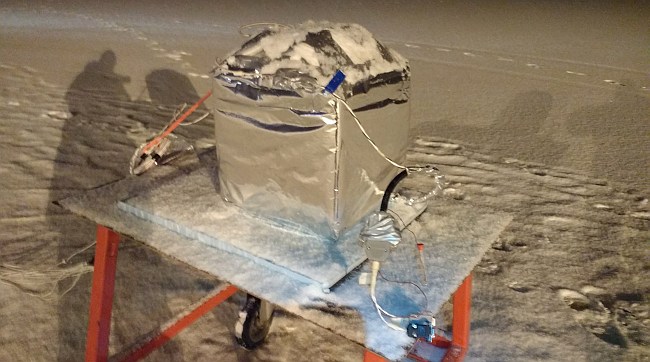
The balloon flight
The balloon was launched from the main runway of the airport on December 17, 2017 at 17:58 utc. As can be seen in the image at left, the launch was acomplished under harsh conditions with a temperature of -8º C, winds around 2 to 3 m/s and a heavy snow.
For this mission was used an Aerostar balloon with a volume of 10.000 cubic meters. After launched the balloon ascended nominally and reached a float altitude of 33 kilometers at 19:30 UTC.
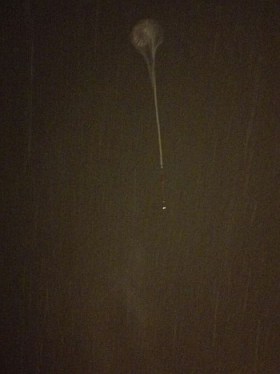
The payload with a weight of 13,5 kg consisted of several subsystems of the future LSPE-Swipe platform (see below) including the power system for winter ballooning, based on Lithium batteries and aerogel insulation for thermal control; Electronics in winter stratospheric conditions, including termination system, communication system, tracking system; Attitude Control Sensors and Motion Processing Unit, for next generation astronomical observation from the stratosphere during polar winter and finally an Iridium communication system. Total suspended weight was 17.6 kg.
After launched, the balloon moved south, entering in the zone iluminated by the Sun and gaining some altitude due to the overheating. Nevertheless, when it returned to shadow the balloon lost altitude. By the next day, December 18, after 21 hours aloft the flight altitude was down to 16.4 kilometers, and so at 15:56 utc was decided to end the mission. The payload landed smoothly in an inhabited area of the Arvidsjaur region in north Sweden. The impact point was located at coordinates 65º 57' - 18º 37' at an altitude of 531 meters above sea level.
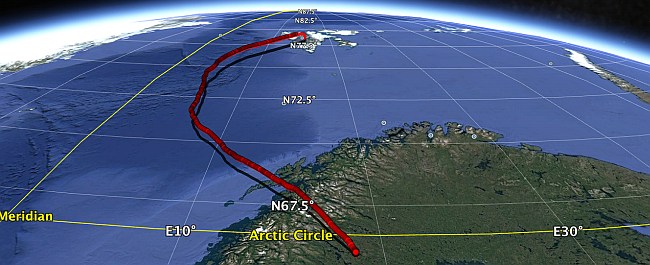
On December 24 a team from the firm Get Lost, reached the landing point and recovered the payload undamaged, as we can see in the images at left.
During the flight onboard sensors recorded temperatures as low as -91º C
A look to the future
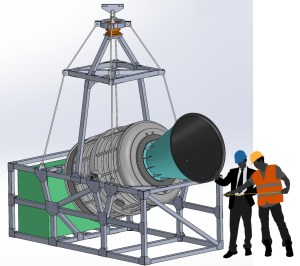
Once the project is firmly established and the technology sufficiently developed and tested, the first candidate to perform a winter polar long flight is an instrument called Large-Scale Polarization Explorer (LSPE) currently in development by a team of the Dipartimento di Fisica, Sapienza Università di Roma under the leadership of Prof. Paolo de Bernardis.
LSPE is a balloon-borne mm-wave polarimeter aimed at measuring the polarization of the Cosmic Microwave Background at large angular scales. It's core is the Short Wavelength Instrument for the Polarization Explorer (SWIPE) which is a Stokes Polarimeter, based on a cold (4 degrees Kelvin) polarization modulator as the first optical element, a simple 50 cm aperture refractive telescope, a beamsplitting polarizer, and two large focal planes, hosting 330 multi-moded bolometers at three different wavelenghts.
Another instrument to be launched under the program is OLIMPO, also developed at La Sapienza but under the guidance of Prof. Silvia Masi.
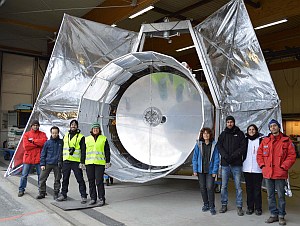
OLIMPO is a balloon-borne milimeter/sub-milimeter waves telescope, that uses the Cosmic Microwave Background (CMB) as a backlight to study the largest structures in the Universe.
It is composed by a 2.6 meters diameter primary coupled to four arrays of cryogenic detectors working in the 150, 220, 350, 480 GHz bands. This range equals at high frequency and similar resolution the observations of 10 meter class telescope from the ground. Taking advantage of the extreme transparency of the stratosphere, OLIMPO uses a differential spectrometer to detect the Sunyaev-Zeldovich effect at 30 independent frequencies.
Unlike LPSE, OLIMPO will be flown in the summer.
Both, the OLIMPO and LSPE projects have been funded and will be launched by the Italian Space Agency.
(Many thanks to Steven Peterzén and Francesco Piacentini by the information and pictures kindly provided.) -
Share this on social media


